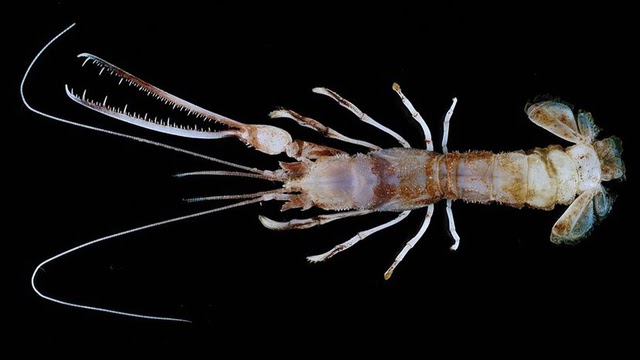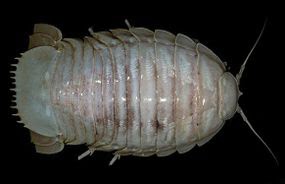Quck answer
Scientists have discovered several new species of deep-sea creatures in the Java Sea, including a chainsaw lobster, a crab with green eyes, and a blind shrimp. These species were found during an expedition conducted by the Indonesian government and several international research institutions. The discovery highlights the importance of exploring the depths of the ocean, as there are likely many more new species waiting to be found. However, it also underscores the urgent need for conservation efforts to protect these unique and vulnerable ecosystems from the impacts of human activity.
Wild Animals

The recent exploration of deep-sea regions in the Java Sea by a team of experts from Singapore and Indonesia has discovered many fascinating species, some of which are new to science. One of the most interesting finds was an 11-inch-long giant deep-sea cockroach, nicknamed Darth Vader, due to its appearance. Along with this, the team also found a deep-sea lobster with a spiky, long claw, which they nicknamed the chainsaw lobster. Scientists believe that the claw is used to sift through sediment on the ocean floor to find food. The team used various tools to explore, such as multicorers, box corers, dredges, and trawls, and traveled more than 1,200 miles in two weeks, pulling up samples from depths of up to 6,889 feet. Other fascinating species discovered include a tube-dwelling worm that pastes granular sediments over itself to form a tubular structure, a bizarre-looking squid with one eye quadruple the size of the other, and a hermit crab with bright green eyes. Sunken wood was a common denominator in many of these finds, and scientists believe that some of the creatures may feed on it. The establishment of diplomatic ties between Singapore and Indonesia in 1967 has allowed for such joint scientific ventures to take place.

One of the discovered species was the giant isopod, nicknamed Darth Vader, which is almost 11 inches long.
Lee Kong Chian Natural History Museum
The diplomatic relationship between two countries that started many years ago has strengthened and become mutually beneficial. This has led to the celebration of RISING50, marking 50 years of their bilateral relationship. As part of RISING50, there is a joint expedition to explore the deep seas south of Java, which highlights the connection between science, politics, history, and the natural world. It proves that these fields are deeply intertwined.
Interesting facts can be found in the watery depths of the sea. Those who consider different human behaviors as “unnatural” have little knowledge of life in the deep sea. There are shrimp that vomit bioluminescent clouds to ward off predators, meat-eating scallops, male seahorses that gestate their young and hermaphroditic fish that can switch genders depending on circumstances. Therefore, there is not much that can be considered unnatural in the deep seas.
FAQ
1. What is Chainsaw Lobster?
Chainsaw Lobster is a new species of deep-sea lobster that was recently discovered in the Java Sea. It gets its name from the long, serrated claws that resemble the teeth of a chainsaw. These claws are used to catch prey and defend against predators.
2. How was Chainsaw Lobster discovered?
Chainsaw Lobster was discovered by a team of scientists from the Indonesian Institute of Sciences and the University of Aberdeen. They were conducting a survey of the deep-sea fauna in the Java Sea using a remotely operated vehicle (ROV) when they came across the unique lobster.
3. What other new species were discovered in the Java Sea?
Aside from the Chainsaw Lobster, the scientists also discovered several other new species in the Java Sea, including a new species of crab, a new species of shrimp, and a new species of sea snail. These discoveries highlight the incredible biodiversity that exists in the deep-sea environment.
4. Why is the discovery of new species important?
The discovery of new species is important because it helps us to better understand the diversity of life on Earth. It also provides valuable information for conservation efforts, as new species may be threatened or endangered. Additionally, the discovery of new species can lead to new insights and discoveries in fields such as medicine and biotechnology.
5. What challenges do scientists face when studying deep-sea creatures?
Studying deep-sea creatures presents a number of challenges for scientists. The extreme pressure, darkness, and cold temperatures of the deep sea make it difficult to collect and study specimens. Additionally, many deep-sea species are poorly understood and difficult to identify, which can hinder research efforts.
6. What can we learn from studying deep-sea creatures?
Studying deep-sea creatures can provide valuable insights into the evolution and adaptation of life in extreme environments. It can also help us to better understand the interconnectedness of different ecosystems and the impact of human activities on the ocean. Additionally, deep-sea organisms may hold potential for new technologies and medical treatments.





Leave a Reply